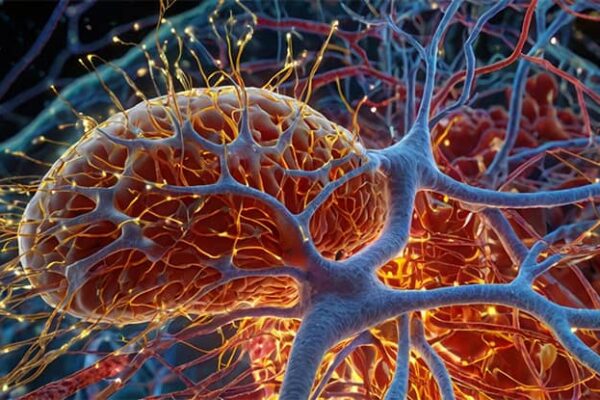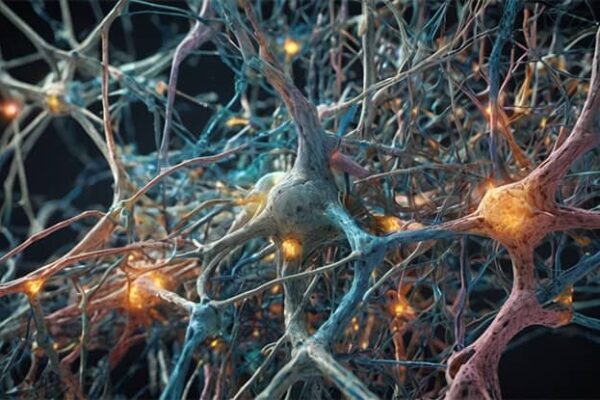Agnosia is a neurological disorder in which a person loses the ability to recognize or identify objects, people, or sounds despite normal sensory function. The term “agnosia” comes from the Greek words “a-” (negation) and “gnosis” (knowledge), literally meaning “lack of knowledge” or “non-recognition.”
The study of agnosia began in the late 19th century when German neurologist Heinrich Lissauer first described the condition in 1890. He identified two types of visual agnosia: apperceptive and associative. Since then, our understanding of agnosia has greatly expanded, and today we know about various forms and manifestations of this disorder.

Types of Agnosia
The human brain is an astonishing instrument, capable of instantly processing vast amounts of sensory information. We don’t think twice about recognizing a friend’s face in a crowd or identifying an object in front of us. However, with agnosia, these seemingly simple tasks become insurmountable obstacles.
The diversity of agnosia forms reflects the complexity and multifaceted nature of perception and recognition processes. Each type of this disorder reveals insights into the function of specific brain regions, as though deconstructing the grand structure of human cognition piece by piece.
Studying different types of agnosia not only helps us understand the brain’s mechanisms but also raises philosophical questions about the nature of reality and our perception of the world. What does it mean to “recognize” something? How does our understanding of the surrounding world form?
Visual Agnosia
Visual agnosia is the inability to recognize or identify objects despite having normal vision. There are several subtypes of visual agnosia:
- Apperceptive Agnosia: Patients cannot form a holistic perception of an object from its individual parts.
- Associative Agnosia: Patients can perceive and even copy an object but cannot name it or explain its function.
- Simultagnosia: The inability to perceive more than one object at a time.
Auditory Agnosia
Auditory agnosia is characterized by the inability to recognize or interpret sounds despite having normal hearing. It may manifest in the following forms:
- Verbal Agnosia: The inability to understand spoken speech.
- Nonverbal Agnosia: The inability to recognize non-speech sounds (e.g., nature sounds, musical instruments).
- Amusia: A specific form of auditory agnosia related to the inability to perceive or reproduce music.
Tactile Agnosia
Tactile agnosia, also known as astereognosis, is the inability to recognize or identify objects by touch despite normal skin sensitivity. Patients with tactile agnosia can feel the texture, temperature, and shape of an object but cannot identify it.
Prosopagnosia (Face Agnosia)
Prosopagnosia is a specific form of visual agnosia in which a person cannot recognize faces, including their own. This condition can be:
- Congenital: The ability to recognize faces does not develop.
- Acquired: The ability to recognize faces is lost due to head trauma or neurological disease.

Causes of Agnosia
Behind the seemingly simple act of recognition lies a complex neural ensemble functioning like a unified orchestra. Any disruption in this coordinated system can lead to agnosia, much like one discordant string disrupting the harmony of an entire musical composition.
Paradoxically, studying the causes of agnosia often leads to surprising discoveries in brain neuroplasticity. Observing how the brain tries to compensate for lost functions provides valuable insights into its adaptive capabilities.
Each case of agnosia is unique, like a fingerprint. Similar symptoms can hide entirely different causes, making the study of this condition akin to detective work, unraveling a complex puzzle.
Brain Damage
- Stroke: Impaired blood flow to specific brain areas can lead to agnosia. For example, a stroke in the occipito-parietal cortex may cause visual agnosia.
- Traumatic Brain Injury: Head impacts, penetrating injuries, or other types of trauma can damage areas of the brain responsible for processing sensory information.
- Infections: Certain central nervous system infections, such as encephalitis or meningitis, can cause brain damage leading to agnosia.
Neurodegenerative Diseases
- Alzheimer’s Disease: As this disease progresses, agnosia may develop, particularly visual and auditory agnosia.
- Lewy Body Dementia: This disease often involves visual hallucinations and can lead to various forms of agnosia.
- Parkinson’s Disease: In its late stages, cognitive impairments, including agnosia, may occur.
Congenital Disorders
- Genetic Factors: Some forms of agnosia, especially prosopagnosia, may have a genetic basis and be passed down through generations.
- Brain Development Disorders: Abnormalities in the development of specific brain regions during the prenatal period or early childhood may lead to agnosia.
It is important to note that in some cases, the exact cause of agnosia may remain unknown, despite thorough medical examination.

Diagnosis
Diagnosing agnosia is like conducting an archaeological dig: doctors and scientists gather information piece by piece to reconstruct a complete picture of the impairments. Each test, each examination, is a key to solving a complex neurological puzzle.
Modern neuroimaging methods allow us to peer into the working brain as if it were a transparent aquarium. However, interpreting the data requires not only technical knowledge but also a deep understanding of neurobiology, psychology, and even the philosophy of perception.
The diagnostic process for agnosia often becomes a real test, not only for the patient but also for their loved ones. It requires patience, attention to detail, and readiness for unexpected insights into the workings of the human brain.
Diagnosing agnosia requires a comprehensive approach and usually includes several stages:
Neurological Examination
- History: The doctor collects detailed information about symptoms, their onset and progression, as well as the patient’s medical and family history.
- Physical Examination: Conducted to assess general health and identify possible neurological abnormalities.
- Neurological Tests: Reflexes, coordination, sensitivity, and other neurological functions are evaluated.
Neuropsychological Tests
- Object Recognition Tests: The patient is shown various objects and asked to identify or describe their functions.
- Face Recognition Tests: Used for diagnosing prosopagnosia. The patient may be shown photos of famous people or family members.
- Auditory Tests: Include tasks for recognizing speech, music, and everyday sounds.
- Tactile Tests: The patient is asked to identify objects by touch with their eyes closed.
- Cognitive Tests: Memory, attention, language, and other cognitive functions are assessed to rule out other potential causes of symptoms.
Neuroimaging Methods
- Magnetic Resonance Imaging (MRI) provides detailed images of brain structures, helping identify possible damage or abnormalities.
- Computed Tomography (CT) may be used for quick detection of bleeding or other acute brain injuries.
- Functional MRI (fMRI) allows real-time observation of brain activity while performing various tasks, aiding in identifying disrupted functions.
- Positron Emission Tomography (PET) is used to assess the metabolic activity of different brain areas.
Diagnosing agnosia can be challenging, as symptoms may resemble those of other neurological and psychiatric disorders. Therefore, differential diagnosis is crucial to rule out other potential causes of symptoms.

Symptoms and Manifestations
The symptoms of agnosia sometimes resemble a surreal painting: a person may see an object but fail to recognize it, hear a sound but not understand its meaning. This condition immerses the patient in a world where familiar things become mysterious and incomprehensible.
The variety of agnosia manifestations reflects the richness and complexity of our perception of the world. Each case of this disorder is a unique opportunity to see how different aspects of our consciousness are intricately intertwined and work together.
Observing agnosia symptoms often leads to philosophical reflections on the nature of reality and consciousness. How does our understanding of the world form? How much can we trust our perception? These questions extend far beyond neurology, touching upon fundamental aspects of human existence.
General Symptoms
- Intact Basic Sensory Functions: In agnosia, the sensory organs function normally, but the brain cannot correctly interpret the received information.
- Normal Intellectual Functioning: In most cases, general intelligence and memory remain intact.
- Frustration and Anxiety: Patients often experience frustration due to the inability to recognize familiar objects or people.
- Compensatory Strategies: Many patients develop alternative ways of recognizing objects or people.
Specific Symptoms for Each Type of Agnosia
-
- Visual Agnosia
- Inability to recognize objects visually. The patient sees an object but cannot identify what it is.
- Difficulty reading (alexia). In some forms of visual agnosia.
- Problems with spatial orientation, especially in simultagnosia.
- Auditory Agnosia
- Inability to understand speech with normal hearing (verbal agnosia).
- Difficulty recognizing non-speech sounds, e.g., nature sounds or musical instruments.
- Problems with perceiving music (amusia). Inability to distinguish melodies or rhythms.
- Tactile Agnosia
- Inability to identify objects by touch with normal skin sensitivity.
- Difficulty determining the shape and texture of objects. The patient can feel an object but cannot describe its characteristics.
- Prosopagnosia (Face Agnosia)
- Inability to recognize the faces of familiar people, including family members and friends.
- Difficulty recognizing one’s own face in a mirror or in photographs.
- Using other cues to recognize people. For example, voice, gait, or characteristic features.
- Visual Agnosia
It is important to note that symptoms can vary in severity. Some patients may experience mild difficulty with recognition, while others may have a complete inability to identify objects or people in a particular sensory modality.
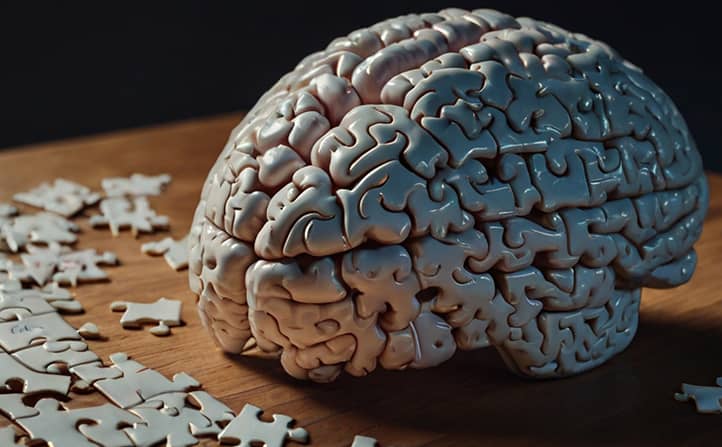
Treatment and Rehabilitation of Agnosia
Treating agnosia is not just a medical process; it’s a true journey into the world of neuroplasticity. Every step on the path to recovery opens new horizons of understanding the brain’s adaptive capabilities, challenging established notions of its functioning.
Rehabilitation for patients with agnosia often resembles teaching a young child: rediscovering the world, learning to recognize and interpret sensory information anew. This process requires not only medical expertise but also immense patience, a creative approach, and emotional support.
Success in treating agnosia frequently leads to breakthroughs in other areas of neurology and cognitive science. Techniques developed for assisting agnosia patients are applied to treat other neurological disorders and foster new approaches to learning and cognitive skill development in healthy individuals.
Medication Treatment
- Treatment of the underlying condition. If agnosia is caused by a stroke, infection, or neurodegenerative disease, the primary goal is to treat this condition.
- Symptomatic treatment. Medications may be prescribed to manage accompanying symptoms, such as anxiety or depression.
- Neuroprotectors. In some cases, medications may be used to protect nerve cells and stimulate neuroplasticity.
Cognitive Rehabilitation
- Perceptual training. Special exercises aimed at improving the ability to recognize objects, faces, or sounds.
- Compensatory strategies. Teaching patients to use other sensory modalities or cues to recognize objects.
- Neuropsychological therapy. Working with a psychologist to develop new skills and strategies to overcome challenges.
- Computerized training. Using specialized software and applications to practice recognition skills.
Adaptive Strategies
- Environmental modification. Creating a more structured and predictable environment to ease orientation.
- Use of assistive technology. For instance, apps for face or object recognition on a smartphone.
- Training family members and caregivers. Helping loved ones understand the patient’s condition and learn effective ways to offer support.
- Group therapy. Participation in support groups to share experiences with others affected by agnosia.
- Professional reorientation. Assistance in adapting to a new professional activity that accommodates limitations related to agnosia.
It is important to note that the effectiveness of treatment and rehabilitation largely depends on the individual characteristics of the patient, the type and severity of agnosia, and the time elapsed since the onset of the disorder.

Impact on Daily Life
Agnosia acts like an invisible filter over perception, transforming the familiar world into a mysterious maze. Everyday tasks that most people perform automatically can become complex puzzles, requiring constant focus and effort for someone with agnosia.
This condition not only changes the patient’s life but also profoundly affects those around them. Family and friends are often forced to rethink their approaches to communication and interaction, learning new ways to connect and provide support.
Paradoxically, agnosia can offer unique experiences and new perspectives. Some patients report that their condition has allowed them to see the world from an entirely new viewpoint, gaining appreciation for aspects of life previously unnoticed.
Social Aspects
- Interpersonal Relationships:
- Difficulties in recognizing familiar people can lead to awkward situations and misunderstandings.
- Patients with prosopagnosia may appear inattentive or indifferent, which often negatively impacts their relationships with others.
- Emotional State:
- Frustration and anxiety due to the inability to perform simple tasks.
- Possible development of depression or social isolation.
- Daily Activities:
- Difficulties with spatial orientation may limit independent movement.
- Problems with recognizing objects can hinder the completion of household tasks.
- Communication:
- Severe communication issues may arise with auditory agnosia.
- Inability to recognize emotions from facial expressions can complicate understanding social cues.
Professional Limitations
- Career Prospects:
- Certain professions may become inaccessible due to specific symptoms of agnosia.
- Career changes or workplace adaptations may be necessary.
- Work Performance:
- Reduced task completion speed when object or face recognition is required.
- Possible work errors due to incorrect identification of objects or people.
- Technology Use:
- Difficulties using computers and smartphones with visual agnosia.
- Issues recognizing auditory signals with auditory agnosia.
- Workplace Safety:
- Increased risk of accidents due to an inability to recognize potentially hazardous situations or objects.
- Social Interactions at Work:
- Challenges in establishing and maintaining professional relationships, especially with prosopagnosia.
Despite these challenges, many individuals with agnosia find ways to adapt and continue leading productive and fulfilling lives. Key factors in this include support from others, compensatory strategies, and environmental adaptation.
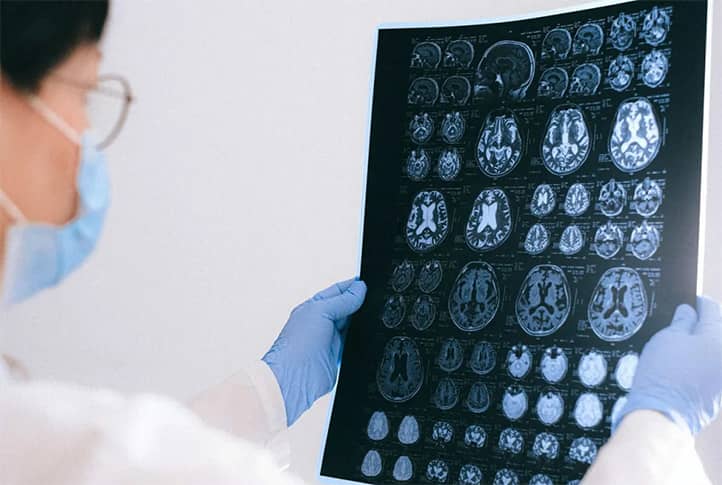
Research and Prospects
Research on agnosia is at the forefront of modern neuroscience, integrating advances in genetics, neuroimaging, and cognitive psychology. Each new discovery in this field adds another piece to the complex puzzle of how the human brain functions.
Advancements in artificial intelligence and machine learning are opening new horizons for studying and treating agnosia. Algorithms that mimic the brain’s processes of pattern recognition not only enhance our understanding of the mechanisms behind this disorder but also offer new approaches to its treatment.
The future of agnosia research lies at the intersection of various scientific disciplines. Integrating knowledge from neurobiology, psychology, the philosophy of consciousness, and information technology promises breakthroughs not only in treating this condition but also in deepening our understanding of perception and consciousness.
Current Scientific Research
- Neuroimaging:
- Using advanced neuroimaging techniques, such as functional MRI and diffusion tensor imaging, to better understand the neural networks involved in recognition processes.
- Examining structural and functional brain changes in various types of agnosia.
- Genetic Studies:
- Exploring genetic factors associated with congenital forms of agnosia, particularly prosopagnosia.
- Searching for genetic markers that may increase the risk of developing agnosia in certain neurological conditions.
- Cognitive Science:
- Investigating perception and recognition processes at the cognitive level.
- Developing and testing new cognitive models to explain the mechanisms of agnosia.
- Neuroplasticity:
- Studying the brain’s potential to compensate for lost functions.
- Examining factors influencing neuroplasticity in patients with agnosia.
- Interdisciplinary Research:
- Collaboration among specialists in neurology, psychology, neurobiology, and computer science for a comprehensive study of agnosia.
Promising Treatment Methods
- Neuromodulation:
- Researching the effectiveness of transcranial magnetic stimulation (TMS) and transcranial electrical stimulation (tES) in treating various forms of agnosia.
- Developing stimulation protocols aimed at activating specific brain areas.
- Virtual and Augmented Reality:
- Creating virtual environments to train recognition skills in safe and controlled conditions.
- Developing augmented reality applications to assist patients in daily life.
- Neuroprosthetics:
- Investigating the possibility of using neural interfaces to bypass damaged brain areas and restore recognition functions.
- Pharmacological Approaches:
- Searching for new drugs that can improve neuroplasticity and cognitive functions.
- Studying the potential of neurotrophic factors in treating agnosia.
- Personalized Medicine:
- Developing individualized approaches to treatment and rehabilitation that take into account each patient’s genetic, neurobiological, and cognitive characteristics.
- Combined Methods:
- Exploring the effectiveness of combining various treatment methods, such as cognitive rehabilitation with neuromodulation.
These research efforts and developments open new horizons in the understanding and treatment of agnosia. However, it is essential to note that the journey from laboratory research to implementing new methods in clinical practice can be lengthy and requires thorough testing for effectiveness and safety.
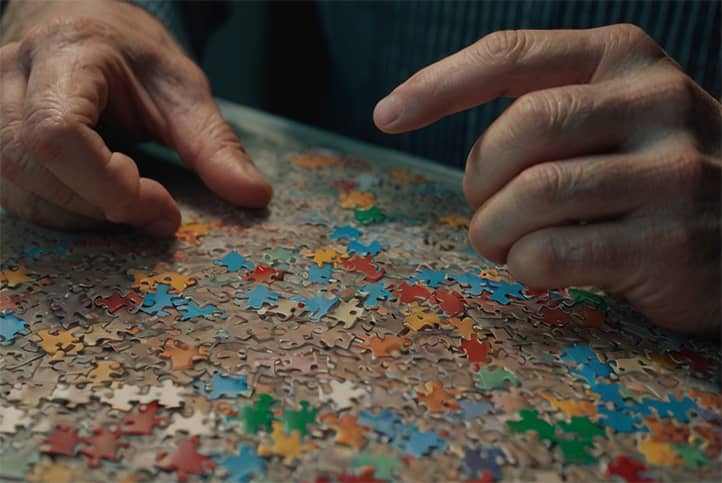
Conclusion
Agnosia, despite its relative rarity, holds a unique place among neurological disorders. This condition not only disrupts specific brain functions but also affects the very foundation of our perception of reality, prompting us to rethink our vision and understanding of the world around us.
The study of agnosia goes beyond purely medical research. It allows us to appreciate the intricacy of perception and recognition processes. Each case of agnosia is a unique puzzle, solving which brings us closer to understanding the fundamental principles of the nervous system.
Progress in diagnosing and treating agnosia not only improves the quality of life for patients but also contributes significantly to the advancement of neuroscience. Methods developed to assist people with agnosia are being applied in treating other neurological disorders and even in creating more sophisticated artificial intelligence systems.
It is crucial to remember that behind each case of agnosia lies a human story—one of overcoming challenges, adapting, and reevaluating. Patients with agnosia and their loved ones face daily challenges that most of us can hardly imagine. Their experiences enrich our understanding of brain function and teach us to appreciate those aspects of perception that we often take for granted.
As our knowledge of agnosia expands, we increasingly realize how complex and remarkable the human brain is. Each new discovery brings us closer to more effective treatment methods and raises new questions about the nature of consciousness, perception, and reality.
Ultimately, the study of agnosia is not only a path to understanding a specific neurological disorder but also an exciting journey into the depths of human cognition. It reminds us of the fragility and remarkable plasticity of our brain, the close connection between perception and comprehension, and how we construct our reality every second of our lives.

